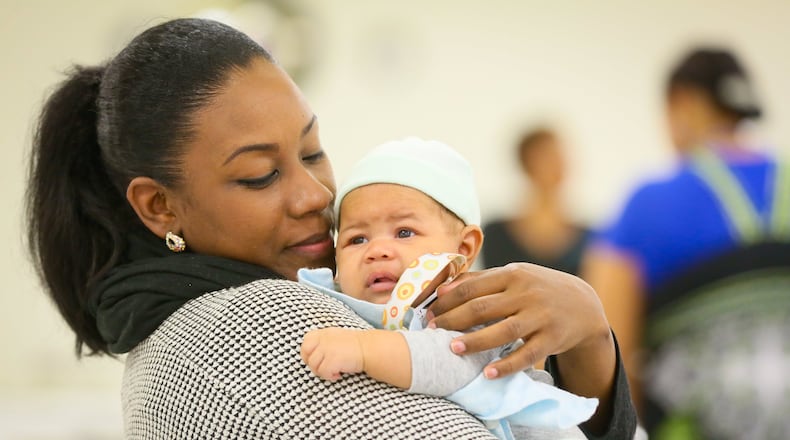In 2010, in the Weinland Park neighborhood near The Ohio State University, 15 infants died per 1000 live births, an infant mortality rate you’d expect to see in a resource-poor nation, not the wealthiest country in the world.
We wanted to learn from the pregnant women living in the neighborhood. We opened in a largely African-American church, served a nutritious meal, and invited all pregnant women to join us.
We quickly learned how infant mortality rates reflect neighborhood living conditions. The neighborhood had high rates of crime, unemployment, food insecurity, homelessness, premature and low birth weight babies, anxiety and depression and poor health in general. Where neighborhoods have a predominance of Black residents, like Weinland Park, infant mortality measures racial inequity.
Ohio, over the years, ranks poorly for inequities. Black families in Ohio suffer one of the highest rates of infant mortality in the nation. Black babies die at over twice the rate of white babies. For example, in 2018, 339 Black babies died in Ohio, an IMR ― and infant mortality rate of 13.9 ― while 553 white babies died with a rate of 5.4. And, sadly, this was one of the lowest rates in Ohio’s history.
Beyond creating grief and suffering for families, high rates of Black infant deaths can be traced to generations of inequities in housing, education, jobs and opportunities.
We strongly agree with the Dayton Daily News’ recent editorial, “Racial inequality can be overcome in our community and should be taken on.”
We must start with eliminating disparities in infant deaths. This means improving maternal health before, during pregnancy and after birth. In Columbus, our Moms2B program coupled with strong leadership and strategic planning from government leaders, philanthropies, businesses and health care systems has seen success. In 2009 our infant mortality rate in Franklin County was 9.6. In 2019 it declined to 6.9. In our first neighborhood, Weinland Park, we saw a fivefold decrease with an infant mortality rate of 2.9.
In today’s pandemic, Moms2B along with Dads2B has gone virtual, offering over 300 women ten weekly group “virtual” teaching sessions and case management “check-ins” with nurses, dietitians, navigators, child development specialists, doctors, community health workers ― all trained to teach and encourage women, (and men to help), have healthy pregnancies, to breastfeed, to practice safe sleep and to see a brighter future for themselves and their families.
We have strong support in Dayton from Ohio’s First Lady, Fran DeWine, the governor and others. We’re here now, and we know that during this frightening pandemic, pregnant women and their families need and deserve Moms2B and Dads2B more than ever.
We are happy to join you in Dayton to eliminate disparities and promote equity.
Patricia Temple Gabbe, MD, MPH Professor of Pediatrics, Obstetrics and Gynecology at the Ohio State University College of Medicine founded Moms2B in 2010. She has practiced and taught pediatrics at Ohio State, Vanderbilt and the University of Washington and been a medical director of several health plans.
About the Author

